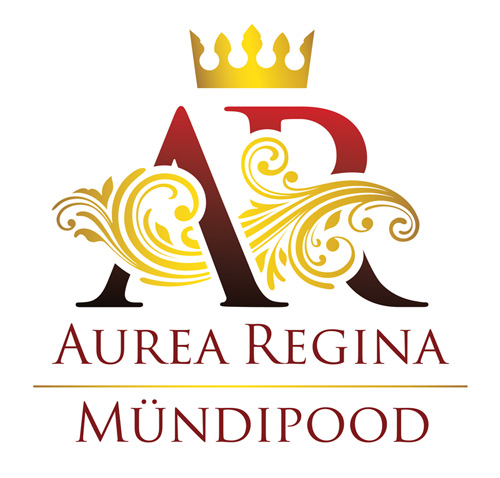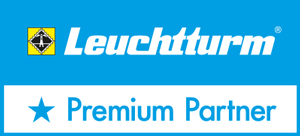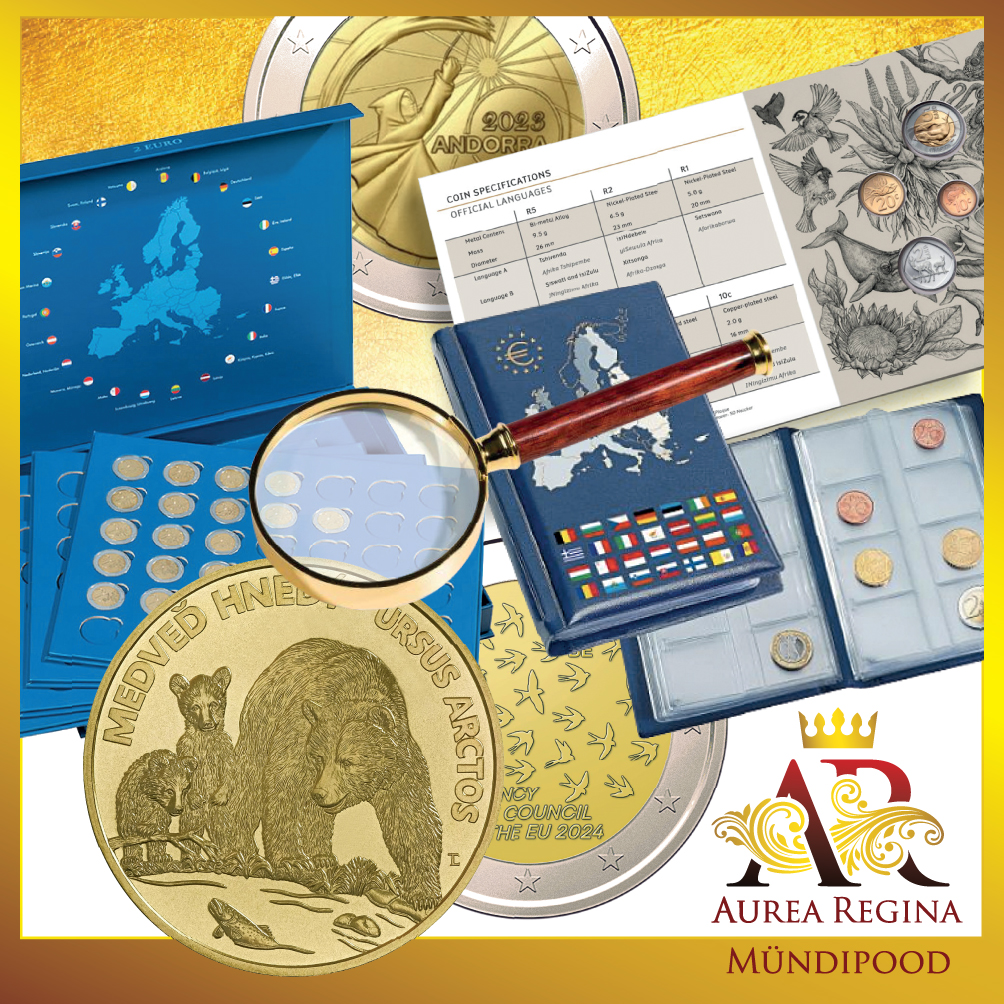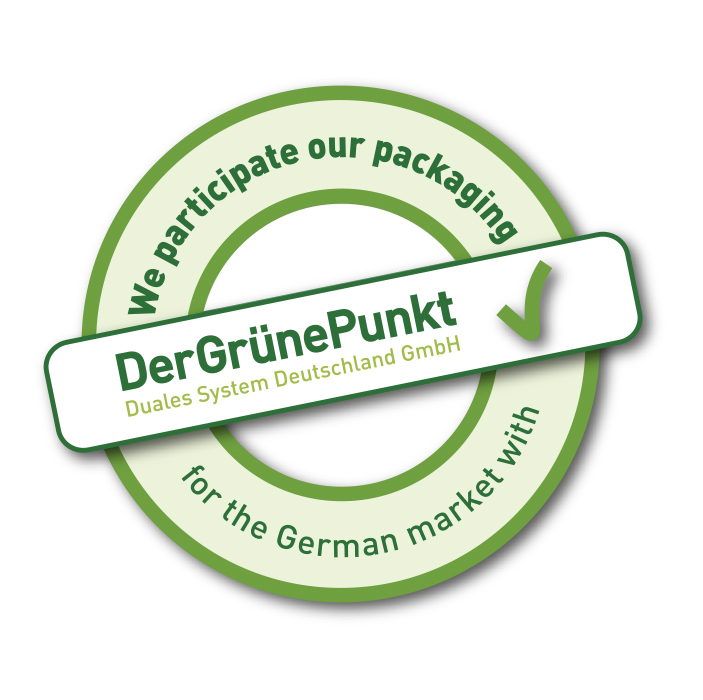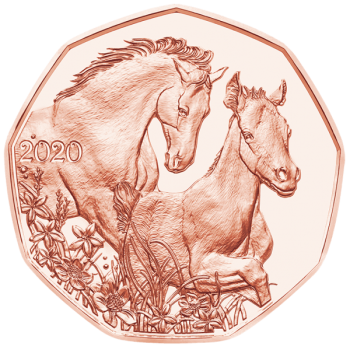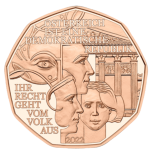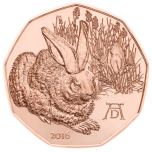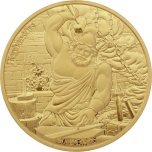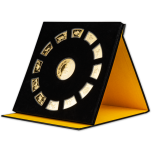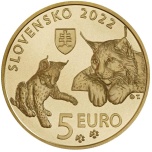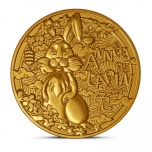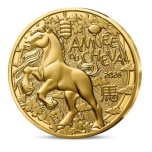Friends for life. Austria 5 € 2020 copper coin, 8,5 g
Price:
15,00 €
Quality: Special Uncirculated
Face Value: 5 Euro
Diameter: 28,5 mm
Copper: 99,9%
Total Weight: 8,5 g
Comes without packaging
Few animals have had a bigger impact on humans than the horse. Its power, beauty and sensitivity make the horse one of the most beloved members of the animal kingdom, not least among young female riders, many of whom form a profound and enduring bond with their loyal steed. The Easter Coin 2020 celebrates this unique bond.
From being the subject of countless prehistoric cave paintings, to the leading form of human transport for more than five millennia, the horse has played an unparalleled role in the development of society. The most iconic of all European horse breeds is the Lipizzaner, made world famous through its connection with the Spanish Riding School in Vienna. Originally from Slovenia, the Lipizzaner has been bred since 1920 at the stud farm at Piber in the Austrian province of Styria, where some 40 foals come into the world every year. Within minutes of their birth, new born foals can stand and, though initially unsteady, are soon galloping joyfully across the alpine meadows.
The coin features a foal in the foreground frolicking happily through a meadow while its mother keeps a watchful eye close behind. The lower part of the coin is decorated with an assortment of spring flowers.
Face Value: 5 Euro
Diameter: 28,5 mm
Copper: 99,9%
Total Weight: 8,5 g
Comes without packaging
Few animals have had a bigger impact on humans than the horse. Its power, beauty and sensitivity make the horse one of the most beloved members of the animal kingdom, not least among young female riders, many of whom form a profound and enduring bond with their loyal steed. The Easter Coin 2020 celebrates this unique bond.
From being the subject of countless prehistoric cave paintings, to the leading form of human transport for more than five millennia, the horse has played an unparalleled role in the development of society. The most iconic of all European horse breeds is the Lipizzaner, made world famous through its connection with the Spanish Riding School in Vienna. Originally from Slovenia, the Lipizzaner has been bred since 1920 at the stud farm at Piber in the Austrian province of Styria, where some 40 foals come into the world every year. Within minutes of their birth, new born foals can stand and, though initially unsteady, are soon galloping joyfully across the alpine meadows.
The coin features a foal in the foreground frolicking happily through a meadow while its mother keeps a watchful eye close behind. The lower part of the coin is decorated with an assortment of spring flowers.
Sarnased tooted
Quality: Uncirculated
Face Value: 5 Euro
Diameter: 28,5 mm
Material: Copper
Total Weight: 8,9 g
Mintage: 200 000
A coin the likes of which Austria has never seen before, Democracy is made from copper from the former roof of the Parliament building in Vienna. When you purchase the coin you therefore acquire a little piece of democracy and by spending 5 euros you get something priceless in return.
On the occasion of the reopening of the Parliament building in Vienna, we are issuing this very special coin. The copper it contains originally formed part of the former roof of the building but was removed during the ongoing renovation of the building. By using it to make the copper edition of the Democracy coin, we are making our democratic tradition something tangible. A strong democracy thrives on discourse. Our opinions may differ, but our consensus is democracy. Likewise, fundamental rights and freedoms make a democracy what it is. They enable individual and social freedom and guarantee the co-determination of the individual.
The coin’s reverse features two heads in profile and one full face, which represent the people as sovereign. To the left, we see a watchful eye surrounded by stylised laurel leaves, to the right, we see a section of the Austrian Parliament building in the background. But much more than this, the coin illustrates the spirit from which our nation was born. This is reflected in the Austrian Constitution, where it says: "Austria is a democratic republic. Its law emanates from the people." These wise words appear on the top and bottom edges of the coin.
Face Value: 5 Euro
Diameter: 28,5 mm
Material: Copper
Total Weight: 8,9 g
Mintage: 200 000
A coin the likes of which Austria has never seen before, Democracy is made from copper from the former roof of the Parliament building in Vienna. When you purchase the coin you therefore acquire a little piece of democracy and by spending 5 euros you get something priceless in return.
On the occasion of the reopening of the Parliament building in Vienna, we are issuing this very special coin. The copper it contains originally formed part of the former roof of the building but was removed during the ongoing renovation of the building. By using it to make the copper edition of the Democracy coin, we are making our democratic tradition something tangible. A strong democracy thrives on discourse. Our opinions may differ, but our consensus is democracy. Likewise, fundamental rights and freedoms make a democracy what it is. They enable individual and social freedom and guarantee the co-determination of the individual.
The coin’s reverse features two heads in profile and one full face, which represent the people as sovereign. To the left, we see a watchful eye surrounded by stylised laurel leaves, to the right, we see a section of the Austrian Parliament building in the background. But much more than this, the coin illustrates the spirit from which our nation was born. This is reflected in the Austrian Constitution, where it says: "Austria is a democratic republic. Its law emanates from the people." These wise words appear on the top and bottom edges of the coin.
15,00 €
Quality: Special Uncirculated
Face Value: 5 Euro
Diameter: 28,5 mm
Copper: 99,9%
Total Weight: 8,5 g
Comes without packaging
It may be more than half a millennium since it was painted but Albrecht Dürer’s ‘Young Hare’ still has an uncanny ability to move and fascinate. Probably the most famous depiction of an animal in the history of European art, the magnificent watercolour shows all the cuddly characteristics that have led this shy and lovable creature to take its place in Middle-European Easter tradition − and make it the ideal subject for our delightful Easter coin.
Durable Dürer
Painted in Dürer’s workshop in Nuremberg in 1502, the ‘Feldhase’, as it is called in German, is the most iconic painting in the vast collection of Vienna’s Albertina museum. Another of Dürer’s masterpieces of observational art in the Albertina collection is the ‘Great Piece of Turf’, which forms the background to the hare on the coin’s reverse, above Dürer’s famous monogram. Painted with almost photographic accuracy, both watercolours are testament to the genius of their creator, whose powers of observation have never been equalled. A Renaissance man, both literally and figuratively, Albrecht Dürer 1471-1528 has been compared to Leonardo da Vinci for the breadth and depth of his artistic and intellectual pursuits. He was a printmaker, engraver and theorist, as well as a painter who pioneered the self-portrait, yet his watercolour of a hare is perhaps his most recognisable work. How he managed to capture such a detailed image of a wild and constantly moving animal remains a mystery, which no doubt adds to the enduring allure of the ‘Young Hare’.
Face Value: 5 Euro
Diameter: 28,5 mm
Copper: 99,9%
Total Weight: 8,5 g
Comes without packaging
It may be more than half a millennium since it was painted but Albrecht Dürer’s ‘Young Hare’ still has an uncanny ability to move and fascinate. Probably the most famous depiction of an animal in the history of European art, the magnificent watercolour shows all the cuddly characteristics that have led this shy and lovable creature to take its place in Middle-European Easter tradition − and make it the ideal subject for our delightful Easter coin.
Durable Dürer
Painted in Dürer’s workshop in Nuremberg in 1502, the ‘Feldhase’, as it is called in German, is the most iconic painting in the vast collection of Vienna’s Albertina museum. Another of Dürer’s masterpieces of observational art in the Albertina collection is the ‘Great Piece of Turf’, which forms the background to the hare on the coin’s reverse, above Dürer’s famous monogram. Painted with almost photographic accuracy, both watercolours are testament to the genius of their creator, whose powers of observation have never been equalled. A Renaissance man, both literally and figuratively, Albrecht Dürer 1471-1528 has been compared to Leonardo da Vinci for the breadth and depth of his artistic and intellectual pursuits. He was a printmaker, engraver and theorist, as well as a painter who pioneered the self-portrait, yet his watercolour of a hare is perhaps his most recognisable work. How he managed to capture such a detailed image of a wild and constantly moving animal remains a mystery, which no doubt adds to the enduring allure of the ‘Young Hare’.
15,00 €
Similar products
Face value: 0.2 $
Issuing country: Samoa
Weight: 25 g
Diameter: 40 mm
Hephaestus‘ correspondence with Libra is derived from his role as the smith god. By crafting fire, he made the weapons that the gods use to impose justice, down to the scales of Dike, the goddess of justice, often thought to be the woman depicted in the sign. As just, Hephaestus is a god of innovation, taming the chaos of the flames to produce items to impose civilization.
Issuing country: Samoa
Weight: 25 g
Diameter: 40 mm
Hephaestus‘ correspondence with Libra is derived from his role as the smith god. By crafting fire, he made the weapons that the gods use to impose justice, down to the scales of Dike, the goddess of justice, often thought to be the woman depicted in the sign. As just, Hephaestus is a god of innovation, taming the chaos of the flames to produce items to impose civilization.
35,00 €
Weight: 29 g x 12 tk + 1 x 89 g
Metal: Cu/NI
Diameter: 12 x 44 x 26,8 mm ; 1 x 65 mm
Face value: 1/2 $ x 13
Quality: Proof-like
Mintage: 18 888 coins
Featuring the 12 lunar animals in traditional Chinese painting art on fan-shaped coins – the Chinese character of each animal is represented on individual designs.
The 12 zodiac animals are placed around one big coin with a diameter of 65 mm – all coins are refined with 24K Gold Plating.
The beautiful collection comes with a lucky mintage of 18,888 pieces – perfect as a subscription program or complete set!
Metal: Cu/NI
Diameter: 12 x 44 x 26,8 mm ; 1 x 65 mm
Face value: 1/2 $ x 13
Quality: Proof-like
Mintage: 18 888 coins
Featuring the 12 lunar animals in traditional Chinese painting art on fan-shaped coins – the Chinese character of each animal is represented on individual designs.
The 12 zodiac animals are placed around one big coin with a diameter of 65 mm – all coins are refined with 24K Gold Plating.
The beautiful collection comes with a lucky mintage of 18,888 pieces – perfect as a subscription program or complete set!
259,00 €
Face value: 5 €
Diameter: 34 mm
Weight: 19.1 g
Metal: Brass
Mintage: 35,000
3. coin from the series “Fauna and Flora of Slovakia”.
Obverse:
The obverse of this euro collector coin shows a lynx kitten on the left side and an adult lynx on the right side. Below the adult are the mint mark of the Kremnica Mint (Mincovňa Kremnica), consisting of the letters ‘MK’ placed between two dies, and the stylised letters ‘TL’, referring to the obverse designer Tomáš Lamač. The name of the issuing country ‘SLOVENSKO’ and the year of issuance ‘2022’ are inscribed along the upper left edge and part of the upper right edge. Below them is the Slovak coat of arms. The denomination and currency ‘5 EURO’ appear in the lower part of the design, above two lynx paw prints at the bottom edge.
Reverse:
On the reverse, filling the left and centre of the design, is a lynx’s head in profile. To the right of the image, on two lines, is the lynx’s scientific name ‘LYNX LYNX’, and below it are the stylised letters ‘LR’, referring to the designer of the reverse side Roman Lugár. Inscribed along the lower right edge is the lynx’s name in Slovak ‘RYS OSTROVID’.
‘The tiger of our forests’, ‘the phantom’: these are names that have been given to Slovakia’s largest wild cat, the Eurasian lynx (Lynx lynx). As an adult, the male weighs 24 kg on average and the female around 4 kg less. In the wild, the lynx can live for up to 17 years. The lynx’s particularly typical and unmistakeable features include tufts of hair on its ears, a black-spotted coat, and bobbed tail. It has excellent eyesight (as referenced in the second part of its Slovak name ‘rys ostrovid’) and superb hearing, but a less developed sense of smell. Generally living and hunting individually, the lynx is agile and can jump well and far. The lynx is in fact a very shy animal that never attacks humans. In the past, the lynx was hunted by the nobility for its valuable pelt and its claws were used in folk medicine. It used to be severely persecuted and was almost hunted out of the territory of what is now Slovakia, surviving until today only in small numbers in the central northern part and in the Eastern Carpathians. Since 1999 the lynx has had year-round protected status in Slovakia. As well as being a treasure of the country’s natural heritage, lynxes in Slovakia are also a source population for efforts to strengthen the species’ presence in other European countries.
Diameter: 34 mm
Weight: 19.1 g
Metal: Brass
Mintage: 35,000
3. coin from the series “Fauna and Flora of Slovakia”.
Obverse:
The obverse of this euro collector coin shows a lynx kitten on the left side and an adult lynx on the right side. Below the adult are the mint mark of the Kremnica Mint (Mincovňa Kremnica), consisting of the letters ‘MK’ placed between two dies, and the stylised letters ‘TL’, referring to the obverse designer Tomáš Lamač. The name of the issuing country ‘SLOVENSKO’ and the year of issuance ‘2022’ are inscribed along the upper left edge and part of the upper right edge. Below them is the Slovak coat of arms. The denomination and currency ‘5 EURO’ appear in the lower part of the design, above two lynx paw prints at the bottom edge.
Reverse:
On the reverse, filling the left and centre of the design, is a lynx’s head in profile. To the right of the image, on two lines, is the lynx’s scientific name ‘LYNX LYNX’, and below it are the stylised letters ‘LR’, referring to the designer of the reverse side Roman Lugár. Inscribed along the lower right edge is the lynx’s name in Slovak ‘RYS OSTROVID’.
‘The tiger of our forests’, ‘the phantom’: these are names that have been given to Slovakia’s largest wild cat, the Eurasian lynx (Lynx lynx). As an adult, the male weighs 24 kg on average and the female around 4 kg less. In the wild, the lynx can live for up to 17 years. The lynx’s particularly typical and unmistakeable features include tufts of hair on its ears, a black-spotted coat, and bobbed tail. It has excellent eyesight (as referenced in the second part of its Slovak name ‘rys ostrovid’) and superb hearing, but a less developed sense of smell. Generally living and hunting individually, the lynx is agile and can jump well and far. The lynx is in fact a very shy animal that never attacks humans. In the past, the lynx was hunted by the nobility for its valuable pelt and its claws were used in folk medicine. It used to be severely persecuted and was almost hunted out of the territory of what is now Slovakia, surviving until today only in small numbers in the central northern part and in the Eastern Carpathians. Since 1999 the lynx has had year-round protected status in Slovakia. As well as being a treasure of the country’s natural heritage, lynxes in Slovakia are also a source population for efforts to strengthen the species’ presence in other European countries.
14,90 €
Denomination: 0,25 €
Alloy: Cupro-nickel Nordicgold
Weight: 15,8 g
Diameter: 34 mm
Quality Brilliant Uncirculated
Year: 2023
Surrounded by plum blossom, a popular symbol in Chinese history, art, and lanterns, the rabbit’s depiction appeals to children. The inscription 'Year of the rabbit’ and the year date appear at the center of the coin. The ideogram of the rabbit appears below.
Alloy: Cupro-nickel Nordicgold
Weight: 15,8 g
Diameter: 34 mm
Quality Brilliant Uncirculated
Year: 2023
Surrounded by plum blossom, a popular symbol in Chinese history, art, and lanterns, the rabbit’s depiction appeals to children. The inscription 'Year of the rabbit’ and the year date appear at the center of the coin. The ideogram of the rabbit appears below.
9,90 €
Denomination: 0,25 €
Alloy: Cupro-nickel Nordicgold
Weight: 15,8 g
Diameter: 34 mm
Quality Brilliant Uncirculated
Year: 2026
Surrounded by plum blossom, a symbol much used in Chinese history and art, and lanterns, the horse is depicted in a joyful, childlike manner. The inscription ‘Year of the Horse’ followed by the year 2026 appears in the centre of the coin. The ideogram of the horse appears at the bottom right of the coin. On the reverse, all the animals of the Chinese zodiac are drawn in a childlike way around the Ying and Yang symbol. A complete cycle of the Chinese zodiac begins in 2018 and lasts until 2029. Each of the twelve years in this period is represented by one of the zodiac animals. The face value is visible in the centre of the denomination and the wording ‘RF’.
Alloy: Cupro-nickel Nordicgold
Weight: 15,8 g
Diameter: 34 mm
Quality Brilliant Uncirculated
Year: 2026
Surrounded by plum blossom, a symbol much used in Chinese history and art, and lanterns, the horse is depicted in a joyful, childlike manner. The inscription ‘Year of the Horse’ followed by the year 2026 appears in the centre of the coin. The ideogram of the horse appears at the bottom right of the coin. On the reverse, all the animals of the Chinese zodiac are drawn in a childlike way around the Ying and Yang symbol. A complete cycle of the Chinese zodiac begins in 2018 and lasts until 2029. Each of the twelve years in this period is represented by one of the zodiac animals. The face value is visible in the centre of the denomination and the wording ‘RF’.
9,90 €
